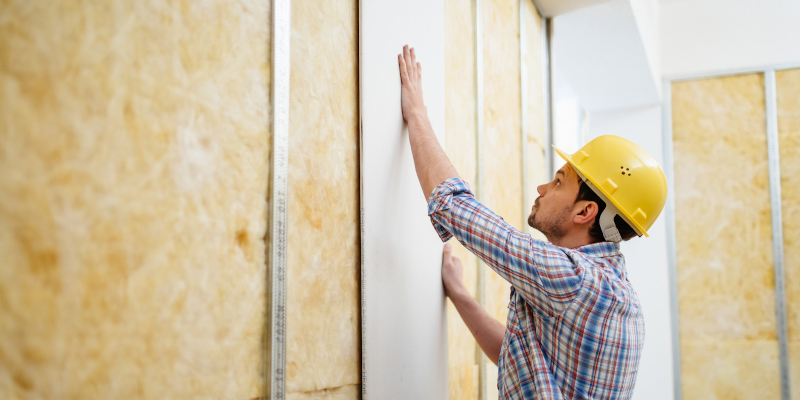Trusted Drywall Fort Worth Specialists for Seamless Outcomes
Trusted Drywall Fort Worth Specialists for Seamless Outcomes
Blog Article
Drywall Installation Facilitated: Tips for Perfect Results
Drywall installation is frequently viewed as a challenging job, yet with the best approach and knowledge, it can come to be a manageable venture. Grasping techniques for reducing, hanging, and finishing drywall can dramatically affect the result.
Selecting the Right Materials
Choosing the appropriate materials for drywall installment is crucial to attaining a resilient and cosmetically pleasing coating. drywall installation. The main element, drywall sheets, generally come in different thicknesses, with 1/2-inch sheets being basic for indoor wall surfaces. For locations requiring added dampness resistance, such as cooking areas or washrooms, think about making use of environment-friendly board or concrete board, which are particularly designed to stand up to humidity

Furthermore, selecting the ideal bolts-- either screws or nails-- is vital for protecting the drywall to the framework. Drywall screws are typically favored for their holding power and reduced risk of popping. Consider the finishing touches such as primer and paint, which not only improve the look yet also safeguard the drywall from moisture and wear.
Preparing the Installation Location
Before starting the drywall setup process, it is vital to prepare the installation location extensively. This prep work includes several critical steps to make certain a smooth and effective job. Initially, clear the area of any furniture, appliances, or blockages that can impede gain access to. A clean office reduces the threat of damage to existing products and enables for effective motion during setup.
Following, examine the walls and ceiling for any blemishes, such as splits, holes, or mold and mildew. Address these issues ahead of time; spot any type of damages and allow adequate time for fixings to completely dry. In addition, make certain that electric outlets, switches, and plumbing are correctly positioned and made up, as this will affect drywall placement.
Consider the environmental problems. A secure temperature and humidity level are essential for optimum bond and performance of the drywall products. If essential, use a dehumidifier or heating unit to create suitable problems.
Cutting and Hanging Drywall
The trick to reliable drywall installation exists in the precise cutting and dangling of the panels. Begin by determining the area properly, considering any blockages such as electric outlets or home windows. Make use of a straight side and an energy knife to rack up the drywall along your measurements, then snap it along the scored line for a clean break. For more detailed cuts, such as around electrical outlets, a drywall saw can be made use of for precision.

Always work from the top down and left to right, making sure that you preserve a staggered pattern to improve stability. Appropriately hanging the drywall sets the foundation discover here for a smooth surface, eventually bring about remarkable lead to your drywall project.
Insulation and Mudding Techniques
While correct cutting and hanging of drywall sets the stage, the following crucial step involves grasping taping and mudding methods to guarantee a smooth surface. Insulation is important for strengthening joints and preventing cracks; it includes embedding tape into the applied joint compound (mud) Beginning with a high quality fiberglass or paper tape, using the tape over the joint and pushing it into the wet mud making use of a taping knife, ensuring no air bubbles continue to be.
As soon as the tape is in place, apply a slim layer of joint substance over the tape, feathering the edges to produce a smooth change to the drywall surface area. Enable this layer to dry entirely prior to sanding it gently to eliminate blemishes. Repeat this procedure, using extra layers of mud as necessary-- typically a couple of coats-- while gradually broadening the application location with each layer to achieve a seamless look.
After the final coat dries out, sand the surface with a fine-grit sandpaper up until smooth. drywall installation. Bear in mind to use a mask throughout sanding to prevent inhaling dirt bits. Mastering these taping and mudding strategies is important for accomplishing a professional-quality finish in your drywall installment
Completing Touches for Excellence
Achieving a perfect drywall setup goes beyond mudding and taping; it culminates in the completing touches that raise the overall look. These final actions are critical in making sure a professional-grade surface that boosts the aesthetic appeals of your space.
Begin by sanding the dried out joint compound to develop a smooth surface. drywall fort worth. After fining sand, clean down the walls with a moist towel to eliminate any dirt bits, ensuring a tidy surface for paint.
Following, apply a primer specifically created for drywall. This action is vital, as it helps secure the joint substance and gives a consistent base for the topcoat. As soon as the primer dries, examine for any blemishes, and repair as required.
Conclusion
Finally, successful drywall setup depends upon the careful selection of materials, thorough prep work of the installment area, great site and precise implementation of cutting and hanging strategies. Mastery of taping and mudding processes is crucial for achieving a smooth finish. In addition, attention to completing touches, consisting of priming and touch-ups, ensures a professional-grade result. By sticking to these standards, the high quality of handiwork can be considerably improved, contributing to the total visual and capability of the room.
Drywall setup is often regarded as a challenging job, yet with the appropriate technique and expertise, it can end up being a workable undertaking.Choosing the ideal materials for drywall installation is vital to attaining a long lasting and cosmetically pleasing surface.Prior to starting the drywall installation process, it is crucial to prepare the installment area extensively. Understanding these taping and mudding strategies is critical for accomplishing a professional-quality surface in your drywall setup.
In final review thought, successful drywall installation hinges on the careful selection of materials, complete preparation of the installation area, and precise implementation of cutting and hanging techniques.
Report this page